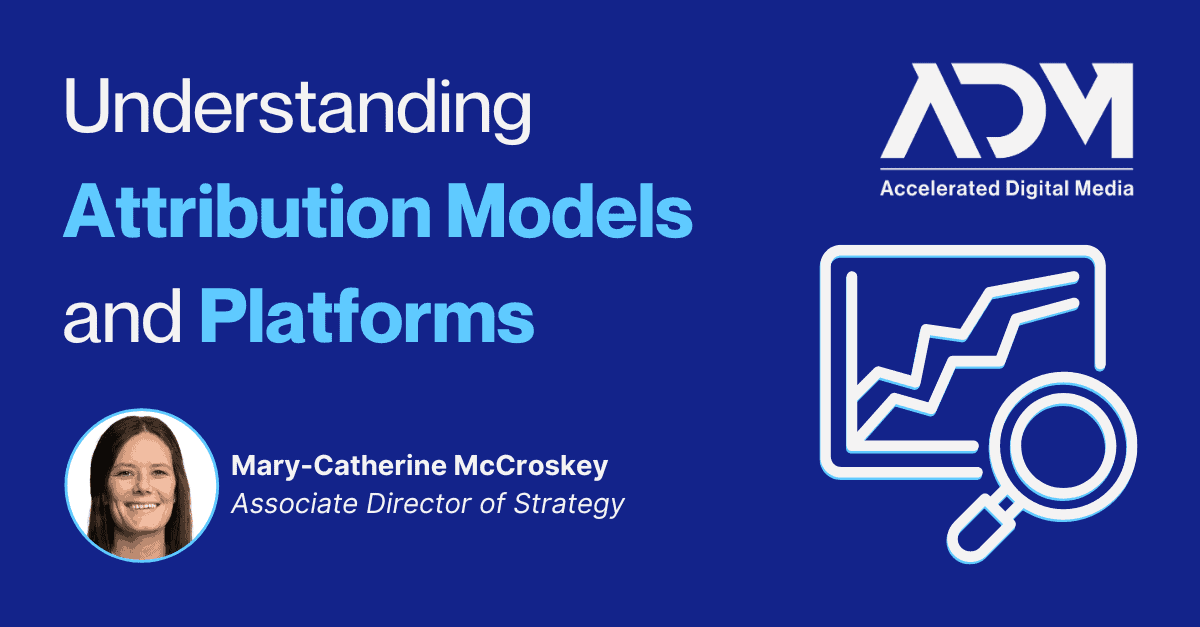Attribution plays a crucial role in performance marketing because it provides advertisers with insights into their audiences and the effectiveness of their ads. Armed with a complete understanding of which digital marketing channels are driving conversions can allow brands to allocate their marketing budgets wisely, focusing on areas that offer the highest potential return on investment (ROI).
With the rise of cross-channel initiatives involving disparate platforms like Google, Facebook, TikTok, and Connected TV, accurately attributing the performance of each channel has become increasingly important—and also more challenging. Several factors contribute to the growing difficulty of attribution:
- Siloed tracking on different platforms: Google, Facebook, and Programmatic all claim full credit for the same conversion, leading to fragmented data.
- Cookie deprecation: The slow demise of third-party cookies makes user tracking more difficult, further complicating the already complex attribution issue.
As marketers navigate these attribution challenges, understanding attribution models and identifying the right attribution platform will be key to gaining valuable insights and maximizing marketing effectiveness. Later in this blog, we’ll take a look at the benefits and nuances of some leading platforms based on our experiences with them—but first, let’s discuss the basics of attribution.
Analytics and Attribution: Exploring the Differences
While analytics services like GA4 and others can play a significant role in simple attribution reporting, it’s important to understand that they are not synonymous. Analytics services primarily focus on tracking user interactions with your web properties, providing valuable insights into user behavior on your website.
While GA4 is free and can be used for understanding holistic channel performance, its ultimate design and capabilities are geared towards website performance and analysis. Its attribution capabilities lack depth and inputs that attribution-specific platforms offer, like incrementality, post-purchase surveys, and more.
Dedicated attribution platforms delve deeper, helping you identify the touchpoints where converters first engage with your brand and understand how they travel from that point to a conversion. This deeper level of analysis enables you to make more informed decisions and optimize your marketing budgets effectively.
Types of Attribution Models
When it comes to leveraging any attribution platform, the ultimate goal is to eliminate duplicate conversion data across multiple platforms. Instead of each platform taking full credit for the same conversion, the credit should be appropriately weighted across whichever SEM, Social, and Programmatic advertising approaches combined to create a conversion. This is where attribution models come into play.
Multi-Touch Attribution
The most common type of attribution is multi-touch attribution (MTA), which typically follows one of three models:
- Last Click: This attribution model gives 100% credit to the channel that received the last click. It tends to favor Google Ads.
- First Click: This model gives 100% credit to the first click, tending to favor Facebook.
- Linear: The Linear model offers equal credit across all clicks, falling between the Last Click and First Click models in terms of credit allocation.
- Rule-Based: Similar to Last, First and Linear, this model gives weight based on positions, but has flexibility to adjust weight accordingly.
Marketing Mix
There is another approach called Marketing (or Media) Mix Modeling. Some platforms go a step further by incorporating both Multi-Touch Attribution and Media Mix Modeling. These platforms build on MTA and additionally consider various factors such as click data, post-purchase surveys, incrementality, geo lift, halo analysis, and other advanced metrics.
Incrementality
Incrementality involves using test-and-control measurement to reveal the true lift of media, whether it is related to the audience or geography. Incrementality lives up to its name by enabling the measurement of each marketing channel’s incremental impact and ad spend, with no reliance on cookies or pixels, and not limited to online measurement. Through various testing and measurement, advertisers can vividly understand the direct lift a channel has on overall marketing efforts. While there are merits to each attribution style, the specificity and clarity of incrementality make it ADM’s preferred approach.
Choosing an Attribution Platform
When it comes to advertising, understanding the performance of each ad platform and its overall return on investment is crucial for advertisers. However, with multiple attribution platforms available, it becomes essential to know the differences in their modeling techniques and identify which platform can provide the best and most accurate attribution by channel.
While many attribution platforms may seem similar to marketers, their modeling techniques and end goals can vary significantly. Therefore, it’s important to consider the type and focus of each platform when making a decision. To help you navigate through the options, here are some popular third-party attribution platforms:
To understand the differences in attribution across these platforms, we analyzed data from each one, comparing them to ad platform reporting such as Google Ads and Facebook Ads. Additionally, we leveraged Google Analytics 4, which provides cross-channel data (excluding spend outside of Google) and is the only free option among these platforms.
By identifying the unique characteristics and analyzing the data, you can make an informed decision on which attribution platform best suits your needs and goals.
Common Attribution Platforms
- Measured
- Measured is an attribution platform that places cross-channel measurement at the core of its purpose. By relying solely on incrementality rather than cookie tracking, marketers can consistently leverage A/B tests (geographic, audience, etc.) to gain a clear understanding of the marketing channels that drive results. Measured’s incrementality approach displays the importance of the entire funnel, highlighting how top-of-funnel and social channels provide a lift that contributes to overall success.
- Rockerbox
- Rockerbox is an attribution platform that prioritizes cross-channel measurement. Through its Multi-Touch analysis, the platform calculates data-driven attribution across channels. Additionally, Rockerbox can utilize post-purchase survey data to enhance its modeling capabilities.
- Rockerbox’s inclusion of MMA and post-purchase survey data provides a deeper look into the channels that may not have driven a last-click conversion, but played a notable role in a consumer’s consideration process.
- Triple Whale
- Triple Whale is an attribution platform specific for Shopify merchants that leverages MTA and MMM modeling.
- Appsflyer
- Appsflyer is an attribution platform that focuses, as the name would suggest, on App marketing. Appsflyer’s focus on mobile attribution allows app brands to understand the role of different advertising channels for their apps, similar to what pixels do for tracking activities on websites.
Common Analytics Platforms:
- GA4
- GA4 is the ubiquitous Google Analytics successor that helps brands understand traffic and behavior on their websites. While its primary purpose is not attribution modeling, it does offer this feature as well. Notably, GA4 is the only free option and provides results that are comparable to some paid options.
- Heap
- Heap is an analytics platform that aims to understand user behavior on websites. While its primary focus is not attribution modeling, it does offer this feature as well. From a website site analytics perspective, Heap allows users to analyze retrospectively, meaning analyzing website data from the past, even before a specific event was created.
- Amplitude
- Amplitude is an analytics platform that emphasizes understanding how customers engage with digital products, but has branched out into attribution solutions. While Amplitude offers common MTA models, its core focus is product analytics, particularly interested in feature usage, funnels, etc.
Main Takeaways
Attribution and Analytics platforms are both important for their specific services. Fortunately for brands, the primary Analytics platform, GA4, is free—but paid options like Heap and Amplitude have their place for specific applications.
A good attribution model, however, is an important investment. When choosing an attribution platform, several factors should be considered: the platform’s focus, its approach to modeling, and pricing. As cookies are relegated to the dustbin of history, ADM sees incrementality as key. That’s why platforms like Rockerbox and Measured stand out as unique offerings, because they take an incremental approach that relies on consistent A/B testing to assess the effectiveness of media channels.
It’s important to note that there is currently no perfect model for attribution, which is why numerous platforms exist. Advertisers should find value in each ad platform’s reporting for campaign optimization but should also consider an overall attribution view that extends beyond the ad platform’s reporting. Taking a directional approach, such as incrementality testing, will become increasingly valuable for channel, campaign, audience, and creative testing.
Selecting the right platform, understanding the limitations of attribution modeling, and embracing incremental testing will contribute to effective campaign optimization and cross-channel attribution analysis. If you’re looking to get a clearer picture of how your marketing is working, contact ADM today to set up an audit.




